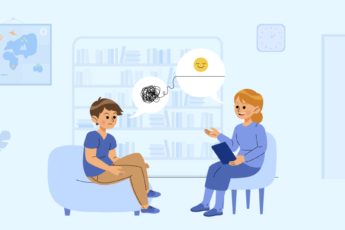How Teacher Training can Support Inclusive Education
Inclusive Education means making real learning opportunities accessible for all types of learners, including ones with diverse abilities, backgrounds, special needs and students from marginalized groups. The term ‘inclusive education’ goes beyond the fence of supporting students with special needs. Inclusive education considers all students as full participants, and it means giving equal opportunities to them all.
To optimally implement inclusive teaching practices, our education system demands a few modifications in areas like infrastructure, support services, curriculum, teaching methods, and learning resources. In most countries, teachers undergo annual training that focus on upgrading skills, and teaching techniques. Focusing on Teacher Training to derive better learning outcomes is underlined by the NEP2020, and the education system is working towards its end goal.
In this article, we will take a closer look at how teacher training can support inclusive teaching practices, and will also help one identify types of inclusive education.
🧑🏫Benefits of Teacher Training
🧑🏫Learning the right techniques to teach
There are myriad ways to teach and deliver curriculum, but it’s important to be mindful of every child’s capacity, accessibility, and ability to grasp concepts. Teaching also involves taking a conscious effort to recognise every child’s strengths, weaknesses, and abilities. Every child has a different learning style, some prefer auditory, visual, or kinesthetic learning. Children have their own ways to retain information and use different strategies for the same.
🧑🏫Recognising the right resources and optimally using them
Age-and-grade-appropriate resources need to be used to teach new concepts, tell different stories, and teach new techniques. Using the right learning resources is key to effective teaching; for instance teaching children about different colours, shapes, and animals can be best done using games, puzzles, and cutouts.
🧑🏫Accepting Diversity and Equity
Inclusive education’s primary principal is to recognise the value of diversity of students. Every child belongs to a different background and culture, features a unique style of learning and has different abilities; that said teachers need to be trained to cater to different types of students. Acceptance of diversity among children in class makes for a healthy environment, where students learn to respect one another. This makes for a very big part of a child’s upbringing, where they learn to accept that differences among people are normal.
🧑🏫 Child-centered learning environment
Child-centered environment is essential to put the needs of the students first. Inclusive teaching practices include teaching techniques that cater to different types of students. Class management and creating a positive and healthy environment is one of the primary teachings of child-centered learning. Different from a conventional classroom, a student-centered environment, the student assumes a more active role than teachers, which enables students to share their ideas, provide feedback, and participate in decision-making. By and large, the end goal is to make students feel valued for their opinions and suggestions, which in the long run adds value to their life in the form of self-confidence and social interaction.
🧑🏫Collaborative and team-based approaches
Besides benefitting the students and their learning outcomes, teacher training can promote team-based approaches among multidisciplinary teams such as teachers, special educators, therapists, and support staff. This calls for collaboration, effective communication, and coordination among professionals, who provide comprehensive support to students with diverse needs.
🧑🏫Reduces bias
Teacher training for inclusive education can substantially shape educators’ attitudes toward unnecessary biases. The training facilitates identifying and addressing personal biases or prejudices that pose a huge hindrance in inclusive practices. Training impart soft skills among teachers that may include empathy, respect, and appreciation for diversity.
🧑🏫Involving families and communities
Inclusive education also emphasizes the importance of involving families and communities in the whole education process. This collaboration drives understanding, support, and active involvement from people associated with the students. Teacher training for inclusive education facilitates learning strategies for effective communication and collaboration with families, including those from diverse backgrounds and cultures.
🧑🏫Continuous professional development
As we all know and understand, teacher training is an ongoing process. These professional development opportunities take credit for enabling teachers to stay updated on the latest research, and policies. After all, it further helps teachers take an inclusive pedagogical approach. All in all, teacher trainings are designed to support growth and professional development among educators. It is imperative for teachers to have reflective practices, and ensure the ability to adapt to evolving needs of learners.
Bottomline
Comprehensive teacher training is curated to empower educators to create inclusive classrooms that support the diverse needs of all learners. The training also impart a positive attitude and an unbiased behavior that results in creating a positive classroom culture that celebrates diversity.
Square Panda India recognises the need for teacher training to derive better learning outcomes. It plays a key role in creating a synergy among all stakeholders involved in the education system. Square Panda India advocates taking a holistic approach towards learning, which puts teacher training at the center of the agenda.




Leave a Comment